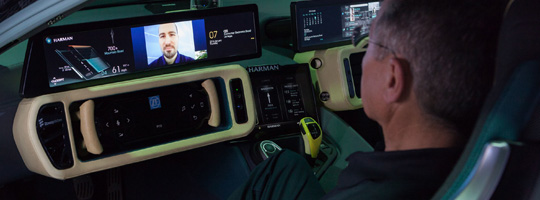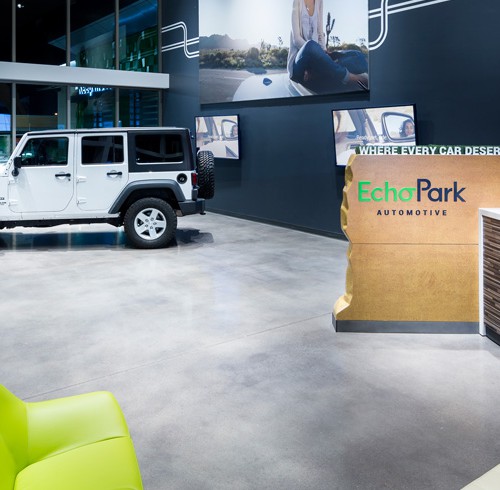The Future Of Self-Driving Cars

Will the young parents of today be teaching their teenaged children to drive 10 years from now, or is one of our most common rites of passage into adulthood about to disappear forever?
The future of self-driving cars is not only one of the most exciting and complex topics currently being discussed throughout the auto industry, but the massive interest also spans well beyond car enthusiasts to include a diverse range of adults across the United States and around the world. Human-driven cars are practically as American as apple pie, which makes the thought of autonomous vehicles becoming commonplace on our roads in the next decade or two feel like pulling the once distant future back a lot closer to the present than most people could have imagined until recently. However, there are now many auto industry and technology experts who predict that this is going to become our reality in 10 or 20 years, or even as soon as five years from now, depending on who you ask. The point is, the belief that self-driving cars will be prevalent on American roads in the next decade or two is no longer considered a radical concept, now becoming a common prediction by a growing number of auto manufacturers, technology innovators, engineers and other experts on the subject.
This should come as good news, right? In many ways, self-driving cars seem like they could turn into one of the greatest human advancements to come to fruition in recent times. Many studies have shown that the multitude of technology that is utilized in autonomous and semi-autonomous driving provides features that have the potential to profoundly improve the safety of passengers and others, including blind spot alerts and collision avoidance systems that detect pedestrians and other objects before an accident occurs and automatically apply the car’s brakes to avoid impact. And when it comes to fully autonomous vehicles, there is the overarching fact that a computer can react faster and more consistently than a human being, which should result in a safer overall driving experience.
We all know that being in a car is one of the most dangerous activities that most Americans find themselves participating in on a regular basis. Although car accidents causing fatalities in the U.S. have decreased somewhat in the past eight years or so, the numbers are still shockingly high, with 32,719 such incidents occurring in 2013 alone. If using self-driving cars could result in reducing the overall number of accidents even a fraction of the amount that many experts and study findings have predicted, then bringing this technology to the American mainstream could massively improve the safety and longevity of the country’s citizens. Not to mention that they could sleep or eat breakfast during their commute to work every morning!
Truly, introducing self-driving cars to the public has the potential to provide some of the solutions to many of our modern transportation problems and frustrations. Imagine being able to do whatever you want while “driving” to your destination. Imagine being able to sleep, do your work, eat a full meal, and finally finish a difficult crossword puzzle, all while being chauffeured by a computerized driving machine that is much safer than a traditional car and maneuvers more effectively than was ever possible with a human driver. Imagine city driving congestion being alleviated by the increased efficiency of GPS and sensor-driven autonomous cars on our roads. It seems like a dream come true, and considering the massive amount of time that an average American adult spends commuting to and from work each day, being able to do other things during the drive could truly improve the lives of many people.
So, what’s the holdup?
The problem is, when you look deeply into all of the issues that surround a transportation change as radical as the introduction of self-driving cars, your head can start to spin from the complexities. There are a multitude of issues that must be resolved before autonomous driving can become a reality on our roads, with many difficult questions that need to be answered before the full technology can be used commercially.
One big concern is that current Internet-connected cars have been shown to be vulnerable to remote hacking, so one can only imagine how dangerous such security flaws could be if they exist in self-driving vehicles in the future. Security researcher Samy Kamkar demonstrated his hacking device at the recent DEF CON in Las Vegas, illustrating its ability to intercept credentials from the RemoteLink mobile application in GM’s OnStar computer system, thereby allowing the hacker to clone them and use them to track, unlock, and even start a vehicle remotely. Once Kamkar unveiled the startling vulnerability of GM’s computer system, he adapted his appropriately-named “OwnStar” device to target systems used in other connected vehicles, including applications for BMW Remote, Mercedes-Benz mbrace, and Chrysler’s Uconnect services on iOS devices. He claimed that all three of these systems suffered from the same security flaw as GM’s RemoteLink app did, writing on Twitter that the cars’ computer systems are trivial to attack.
Although GM quickly responded to the announcement by issuing a patch to fix the vulnerability in its RemoteLink app, Kamkar’s ability to hack into the computer systems in cars sold by four major auto manufacturers was enough to create massive concerns about the potential for hackers to compromise the future systems of fully autonomous, connected vehicles, and the horrific results that could ensue. As soon as an Internet-connected computer is able to fully control a car, and a driver is willing to give up all of their driving control to that computer, an attacker’s ability to remotely control the car could potentially allow them to do anything that they want, from stealing a driver’s credit card information to steering them off the road. Certainly, until the public starts to feel better assured that self-driving cars will be safe from being hacked, it’s hard to imagine the majority of people being willing to take the risk of traveling in one on a regular basis.
The University of Michigan’s Transportation Research Institute recently released a report examining drivers’ attitudes toward different levels of automated driving, and the results of the survey of more than 500 licensed drivers clearly illustrated that an overwhelming majority of motorists are not willing to completely hand over their vehicle’s controls to a computer, at least not at this point. The researchers explained that overall public attitudes haven’t changed much in the past year since the institute last studied the topic, and it’s easy to predict that the recent illustration of the vulnerability of several connected-cars will provide yet another reason for people to be wary of the safety of self-driving vehicles.
And what about insurance? If an accident occurs and there are no human drivers, who is deemed responsible? How can an insurance company determine whether or not one of the vehicle owners should have their premium increased as a result of a collision? Can one of the people involved in the accident sue the other one if neither of them was driving at the time of the impact? A study conducted earlier this year by consulting firm KPMG asked a group of executives from major insurance companies a series of questions that were designed to measure their knowledge about autonomous vehicles, and the data indicated that auto insurers are generally unprepared for the commercial introduction of self-driving cars. Although many experts are studying the issues surrounding insurance for autonomous vehicles, there haven’t been any overall concepts that have been widely accepted, and it’s an incredibly complicated issue that will have to be resolved before fully automated cars can become commercially available.
The inherent loss of privacy that is certain to be one of the results of self-driving cars is another significant and valid concern that has been raised by many industry experts and citizens alike. Even currently available connected-cars running GPS systems and a multitude of Internet-enabled apps have the potential to compromise the driver’s privacy, and the technology that would be running in a self-driving car is certain to increase this potential dramatically. Would the average American driver be willing to give up some of their privacy in exchange for being able to enjoy the increased safety and convenience of traveling in an autonomous vehicle? Based on data from many recent surveys, the average consumer still feels that there is a long way to go in resolving privacy issues and alleviating other concerns before they will be ready to accept self-driving cars as their regular mode of transportation.
And this is just the beginning of the issues that need to be resolved. How will self-driving cars be regulated by local governments across the country, and by other authorities around the world? Will autonomous cars and traditional cars end up co-existing on our roads during a transition period, and if so, how safely and effectively will they be able to interact with each other considering the fact that the computer-driven vehicle won’t have a human driver who understands the subtleties of facial expressions and hand gestures that currently help commuters negotiate traffic with each other? And as if this wasn’t enough to figure out already, there was also a separate study conducted by the University of Michigan’s Transportation Research Institute earlier this year that determined that motion sickness is likely to be a greater problem for the occupants of fully autonomous vehicles than for the occupants of cars that are driven by humans. The explanation given for the increased potential involves an elevation in the three main factors that contribute to motion sickness, which are a conflict between vestibular (balance) and visual inputs, the inability to anticipate the direction of motion, and the lack of control over the direction of one’s motion.
Clearly, there are a seemingly endless number of complex obstacles to overcome before self-driving cars can become commonplace on the roads of America. At the same time, it seems hard to find a company in the auto or technology industries that isn’t developing at least one aspect of autonomous vehicles these days, and there are many powerful players who want to make their existence a reality as soon as possible. Giant companies that are as diverse and powerful as Google, Tesla, Ford, Apple, Nissan and Intel, to name a few, are currently working on the many different components of self-driving car development, manufacturing, regulations and marketing.
Is the competition to become the first company to bring fully autonomous cars to consumers the modern day equivalent of the race to get to the moon in the 1960s, and if so, who is going to win? Although it may still seem far-fetched to some, the possibility that we’ll all be sitting in the back seat of our autonomous cars one day soon, while sailing down the freeway with the complete control of the vehicle in the hands of a computer, has evolved from being the wild dream of a few to the common prediction of many.
Perhaps the young parents of today won’t be teaching their kids to drive in 10 years after all.












Warning: count(): Parameter must be an array or an object that implements Countable in /home/pg4b1yzvrqqo/domains/test.drivingsalesnews.com/html/wp-includes/class-wp-comment-query.php on line 399